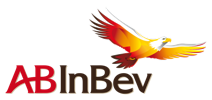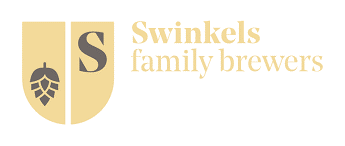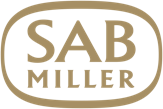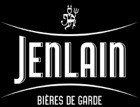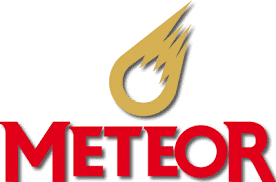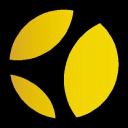Synthèse
Since 2020, the global beer market has fluctuated due to the COVID-19 pandemic, which saw production fall by over 6.28%. In 2021, production began to recover, with global output reaching 1.89 billion hectolitres. Despite challenges such as rising production costs, due in part to higher energy prices, the market experienced growth. In France, beer sales rose by 11.8% in 2021, reaching 4.43 billion euros, and the sector remained dynamic with revenues of 4.7 billion euros in 2022.French beer consumption has remained stable, dropping slightly from 39 to 33 liters per person per year.
The French market reflects a global trend, with a few big players like Heineken and Carlsberg dominating alongside a multitude of independent local breweries that have contributed to a doubling of direct jobs in the industry between 2015 and 2022. Non-alcoholic beers are also a fast-growing segment.
Excise duties and labeling regulations continue to shape the industry, with France a major importer, sourcing mainly from Belgium, the Netherlands and the UK, although it is a significant producer.
A shift towards hops and conviviality
The French market has witnessed a notable shift in alcohol consumption, gradually moving away from traditional table wines towards the charming effervescence of beers. Over the past few decades, the appeal of beer has strengthened, with the household beer consumption index rising beyond all expectations, more than doubling from the benchmark to exceed an index of 250 by 2020. It's hard to ignore this burgeoning affinity, a testament to brilliant marketing and evolving consumer tastes.
Beer enjoys a privileged position among the French population, perceived by the majority as a drink that embodies conviviality - appreciated by some 95% for its social entertainment qualities. Its wide range of flavours appeals to the tastes of almost 94% of consumers, and its appeal does not diminish with age, with 92% of consumers of all generations appreciating it in the same way.
Against this backdrop, the French have a pronounced taste for different brands of beer, with Leffe being the most admired brand, garnering the affection of over 57.8% of consumers surveyed. Brands such as Carlsberg, though less endearing by comparison, still managed to carve out a special place for themselves, with almost 35.9% of consumers expressing their attachment to this brand. It's worth noting that, with the exception of the Desperados brand, which enjoys an even split between the sexes, other beer labels tend to lean towards the preference of a specific gender.
From a broader perspective, overall alcohol consumption in the country has followed a downward trajectory, declining by around 18% in volume per individual. This decline is the sign of a societal shift towards more responsible drinking patterns, encouraged by health prevention campaigns. However, in a contradictory fashion, specific beer consumption per person has risen modestly, showing that, in the alcohol segment, beer is capturing a growing share of the market. The juxtaposition of preferences is striking when comparing beer with other alcoholic beverages such as wine or champagne. More than 51% of the population prefer beer, confirming its position as a beverage, but also as an everyday consumer product.
The French beer market is rich in history and flavor, and features a wide range of players whose products range from classic lagers to innovative craft products.
at the very epicenter of this dynamic market are several key companies that have established themselves not only as market leaders, but also as integral elements of French beer culture. These titans of the industry include Heineken NV, Kronenbourg SAS (a subsidiary of Carlsberg A/S), AB InBev NV, Brasserie Meteor, and Difcom La Cave des Pères SA. Each of these entities brings its own style, brand and strategic approach to the French beer landscape, ensuring a diverse and competitive environment.
- Heineken NV is not only a popular Dutch export, but also a major force in the French beer market. With a portfolio of dominant brands such as Heineken itself, Desperados and Affligem, the company has established itself as a leading competitor. Its triple leadership in production, distribution and retailing gives it a formidable presence, not least through its control of France Boissons, a powerful distribution network serving thousands of foodservice customers.
- Kronenbourg SAS, under the aegis of Denmark's Carlsberg, is the largest beer producer on French soil, with production figures that speak volumes about its impact. The Obernai brewery is a testament to its production capacity, with millions of hectolitres produced every year. Kronenbourg beers strike a balance between tradition and trend, with its flagship 1664 brand representing the elegance of French brewing, and other brands dominating different segments, including the alcohol-free beer category.
- Belgium's AB InBev NV, the world leader in the sector, plays a slightly different game, relying on the strength of fully imported beers such as Leffe and Hoegaarden, even though it has no brewery in France. Nevertheless, the presence of these beloved brands ensures AB InBev a significant share of the market, resonating with customers who appreciate tradition and international renown.
- Brasserie Meteor, a proud family brewery, embodies French brewing heritage through its independence and long tradition. The brewery blends the art of regional craftsmanship with an innovative spirit, offering beers that cater both to local tastes and to those seeking a true French brewing experience.
- Difcom La Cave des Pères SA specializes in importing and distributing a variety of beers, offering French consumers a global selection.
à la compréhension de ce marché
Détail du contenu
 Informations
Informations
- Nombre de pages : 30 pages
- Format : Version digitale et PDF
- Dernière mise à jour : 20/11/2023
 Sommaire et extraits
Sommaire et extraits
1 Market overview
1.1 Definition and scope of study
A universal and ancient beverage, beer is the world's best-selling alcoholic beverage.
Beer is mainly produced from barley malt, sometimes supplemented by other cereals. Beer can be consumed in bottles, cans or kegs. It can be blond, white, red or brown. The color of the beer depends on the choice of malt and the temperature at which it is cooked:
In France, a beverage cannot be called "bière" if it contains no hops at all, or any bittering substances derived from hops. to date, there are between 60 and 110 hop producers, proving that the niche is growing fast.
- White beers: brewed with wheat and pale malts;
- Blonde beers: brewed with pale barley malts;
- Red or amberbeers: brewed with more roasted barley malts;
- Brown beers: brewed with highly roasted brown malts.
As of September 2023, there are more than 2,400 brewers in France, compared with just thirty or so thirty-five years ago.
Since 1960, French alcohol consumption has fallen from 200 liters per person per year to 80 liters. However, beer consumption has fallen much less, from 39 to 33 liters per person per year, reflecting the drink's growing popularity.
However, the sector is faced with a significant increase in production costs, due to inflation, and above all to a considerable rise in energy costs.
The global beer market is dominated by a number of major international players(AbinBev, Heineken, CR Snow). The rest of the market is made up of alarge number of independent local players. The French market is no exception to this trend. The dynamism of local players is reflected in the continuing opening of microbreweries. Non-alcoholic beer is also growing strongly, and represents a very dynamic segment of the market.
1.2 The global beer market
Global beer market size
According to Mordorintelligence, the global beer market will be worth $*** billion in ****, and will grow at a CAGR (***) of *.**% over the period ****-****.we can therefore estimate the size of the global market in the coming years:
Global beer market size based on a *.*% CAGR World, ****-****, ...
1.3 The size of the French beer market
In France in ****, the beer market is booming. With an **. *% increase in sales, corresponding to *.** billion euros, beer is the most dynamic category in the liquid sector.
In ****, the beer sector in France generated sales of *.* billion euros.
Growth in the beer market is mainly driven by specialty beers, the segment ...
1.4 French foreign trade
To analyze French foreign trade, we use the database of the French Customs and Excise Department. The code for beer is **** in CPF.
Exports, imports and coverage rate
Evolution of beer exports and imports between **** and ****, and results over the last ** months France, ****-****, millions of euros Source: ****
France is thus ...
2 Demand analysis
2.1 Trends in alcohol consumption in France
Individual consumption of alcoholic beverages in France
Individual alcohol consumption in France has been declining steadily for over ** years(***), largely as a result of numerous campaigns to prevent the risks associated with its consumption. added to this has been a transformation in drinking habits, with the French increasingly abandoning the consumption ...
2.2 Beer and the French
The French and beer since ****
Household beer consumption since **** France, ****-****, index base *** in **** Source: ****
The index has more than doubled since ****, rising from *** in **** to over *** in ****. The message is clear: the French are increasingly fond of hop-flavored beverages. One of the main reasons for this is marketing and advertising ...
2.3 France's favourite beer brands
The graph below is based on OpinionWay 's survey of French consumers' favorite brands in February ****. These are respondents' answers to the question "Do you like this or that brand of beer?" for each brand, with the percentage corresponding to the proportion of respondents who answered "yes".
Leffe is the favorite ...
3 Market structure
3.1 The French beer value chain
The French beer value chain is made up of four categories of activity:
Source: ****
In recent years, the French brewing industry has seen a sharp increase in the number of direct jobs, reflecting significant growth in the business. Indeed, the number of direct jobs has almost doubled between **** and ****. Number of ...
3.2 Overview of beer production in France
Production trend
Beer production in France rose by *% in **** over the previous year, with *.** billion liters produced. France is one of the only countries in Europe to record an increase.beers made in France account for *% of total European production, which stands at ** billion liters. [***]
To provide an overview of trends ...
3.3 Beer distribution in France: the reign of the off-trade
GMS (***) represent the leading beer distribution channel in France. In ****, **% of beer in France was consumed in food retailing and **% in the on-trade.
In fact, beer sales are still mainly concentrated in the off-trade, i.e. in retail outlets, which have accounted for **% of beer sales since **** and until ****, reducing the ...
3.4 France's beer leaders
By ****, AB inBev, Heineken and Carlsberg will dominate the French beer market. In French supermarkets, Heineken has a **% market share by value. The Dutch brewer has * breweries in France , producing over *.* million hectolitres of beer a year . [***]
The group also relies on a portfolio of strong brands (***) to dominate beer sales ...
4 Offer analysis
4.1 Typology of products on the market
The word beer is a generic term that covers a beverage with multiple realities. It is possible to classify beers by color, or by type of fermentation.
Classification by color is the one used by consumers. The color of the beer depends on the choice of malt and the temperature at ...
4.2 Different levels of offer positioning
The growing interest in beer consumption by a larger percentage of the population, and the emergence of trends such as premiumization and health, have contributed to an expansion of the offer, with a more fragmented segmentation of the sector, including premium, economy, specialty and non-alcoholic beers. to a more fragmented segmentation ...
4.3 Beer price trends
Trends in the consumer price index for beer
Annual consumer price index - Base **** - All households - Metropolitan France - Coicop nomenclature : **.*.* - Beers
CPI trend since ****, base *** in **** France, ****-****, index Source: ****
Prices have remained fairly stable over the past ** years. Indeed, since ****, prices have risen by just *% in ...
5 Regulations
5.1 Name regulations
Decree no. **-*** of March **, **** defines the term " beer": the name "Beer" is reserved for the beverage obtained by alcoholic fermentation of a wort prepared from cereal malt, raw materials from cereals, food sugars and hops, substances conferring bitterness derived from the production of beer.the name "beer" is reserved for ...
5.2 Beer labelling
According to EU regulation n°****/**** of October **, ****, certain information is mandatory on beer labels, including:
The name of the foodstuff; Net quantity; Presence of allergens; Durability date; Alcoholic strength by volume; Specific conditions of use; Country of origin; The company name of the operator.
Article ** of Regulation (***) no. ****/**** gives the alcoholic ...
5.3 Excise duties
Beer is subject to excise duty, an indirect tax levied on the sale of products such as tobacco, alcohol or petrol. This tax is borne by intermediaries, and is designed to raise prices in order to discourage consumers and reduce their consumption (***). Fiscally, this rate is set according to the alcoholic ...
6 Positioning the players
6.1 Player segmentation
- Kronenbourg France
- AB InBev
- Swinkels Family Brewers (Bavaria)
- SAB Miller (AB Inbev)
- Brasseries Duyck (Jenlain)
- Brasserie Licorne
- Brasserie Meteor
- Carlsberg
- Anheuser-Busch InBev
- Heineken Entreprise France
- Malteurope Groupe (Vivescia groupe)
 Liste des graphiques
Liste des graphiques
- Taille du marché mondial de la bière sur la base d'un TCAC de 4,67%
- Evolution de la production mondiale de bière
- Parts de marché des entreprises du secteur
- Evolution des ventes de bières en volume
- Les ventes de bière en France parmi les autres boissons alcoolisées (GMS seulement)
Toutes nos études sont disponible en ligne et en PDF
Nous vous proposons de consulter un exemple de notre travail d'étude sur un autre marché !
Dernières actualités
Entreprises citées dans cette étude
Cette étude contient un panorama complet des entreprises du marché avec les derniers chiffres et actualités de chaque entreprise :
 Choisir cette étude c'est :
Choisir cette étude c'est :
Accéder à plus de 35 heures de travail
Nos études sont le résultat de plus de 35 heures de recherches et d'analyses. Utiliser nos études vous permet de consacrer plus de temps et de valeur ajoutée à vos projets.
Profiter de 6 années d'expérience et de plus de 1500 études sectorielles déjà produites
Notre expertise nous permet de produire des études complètes dans tous les secteurs, y compris des marchés de niche ou naissants.
Notre savoir-faire et notre méthodologie nous permet de produire des études avec un rapport qualité-prix unique
Accéder à plusieurs milliers d'articles et données payantes
Businesscoot a accès à l'ensemble de la presse économique payante ainsi qu'à des bases de données exclusives pour réaliser ses études de marché (+ 30 000 articles et sources privées).
Afin d'enrichir nos études, nos analystes utilisent également des indicateurs web (semrush, trends…) pour identifier les tendances sur un marché et les stratégies des entreprises. (Consulter nos sources payantes)
Un accompagnement garanti après votre achat
Une équipe dédiée au service après-vente, pour vous garantir un niveau de satisfaction élevé. (+33) 9 70 46 55 00
Un format digital pensé pour nos utilisateurs
Vous accédez à un PDF mais aussi à une version digitale pensée pour nos clients. Cette version vous permet d’accéder aux sources, aux données au format Excel et aux graphiques. Le contenu de l'étude peut ainsi être facilement récupéré et adapté pour vos supports.
 Nos offres :
Nos offres :
the beer market | France
- Quels sont les chiffres sur la taille et la croissance du marché ?
- Quels leviers tirent la croissance du marché et leur évolution ?
- Quel est le positionnement des entreprises sur la chaine de valeur ?
- Comment se différencient les entreprises du marché ?
- Données issues de plusieurs dizaines de bases de données
Pack 5 études (-15%) France
- 5 études au prix de 75,6€HT par étude à choisir parmi nos 800 titres sur le catalogue France pendant 12 mois
- Conservez -15% sur les études supplémentaires achetées
- Choisissez le remboursement des crédits non consommés au terme des 12 mois (durée du pack)
Consultez les conditions du pack et de remboursement des crédits non consommés.
- 17/11/2023 - L'analyse a été complètement actualisée par un analyste de Businesscoot, intégrant les données et tendances les plus récentes du marché, tout en examinant l'incidence des coûts de production sur le secteur.
- 25/05/2023 - Ajout des informations de l'entreprise Malteurope Groupe (Vivescia groupe)
- 20/04/2023 - Ajout des informations de l'entreprise Heineken Entreprise France
- 13/04/2023 - Ajout des informations de l'entreprise Anheuser-Busch InBev
- 13/04/2023 - Ajout des informations de l'entreprise Carlsberg
- 04/04/2023 - Ajout des informations de l'entreprise C10
- 21/02/2023 - Mise à jour des données financières de l'entreprise Brasserie Meteor
- 21/02/2023 - Mise à jour des données financières de l'entreprise Brasserie Licorne
- 21/02/2023 - Mise à jour des données financières de l'entreprise Brasseries Duyck (Jenlain)
- 21/02/2023 - Mise à jour des données financières de l'entreprise AB InBev





 Heineken fait sa révolution verte dans la production de bière - 18/04/2024
Heineken fait sa révolution verte dans la production de bière - 18/04/2024
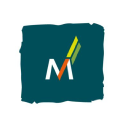 Malteurop ouvre une malterie au Mexique - 21/10/2023
Malteurop ouvre une malterie au Mexique - 21/10/2023
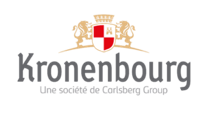 Kronenbourg joue la bière artisanale, sans alcool ou aromatisée face à la baisse du marché - 04/10/2023
Kronenbourg joue la bière artisanale, sans alcool ou aromatisée face à la baisse du marché - 04/10/2023
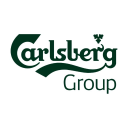 Carlsberg teste sa bouteille en fibre de betterave. - 23/06/2022
Carlsberg teste sa bouteille en fibre de betterave. - 23/06/2022
